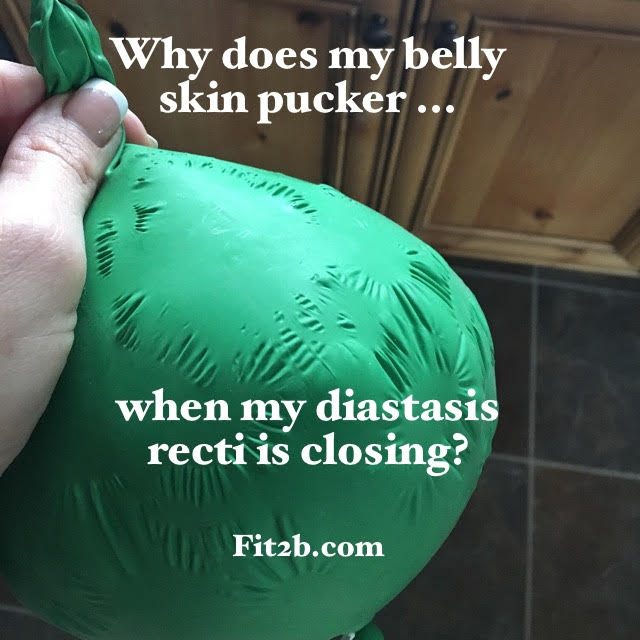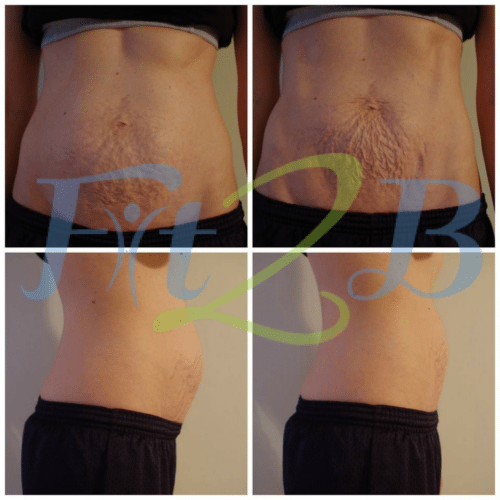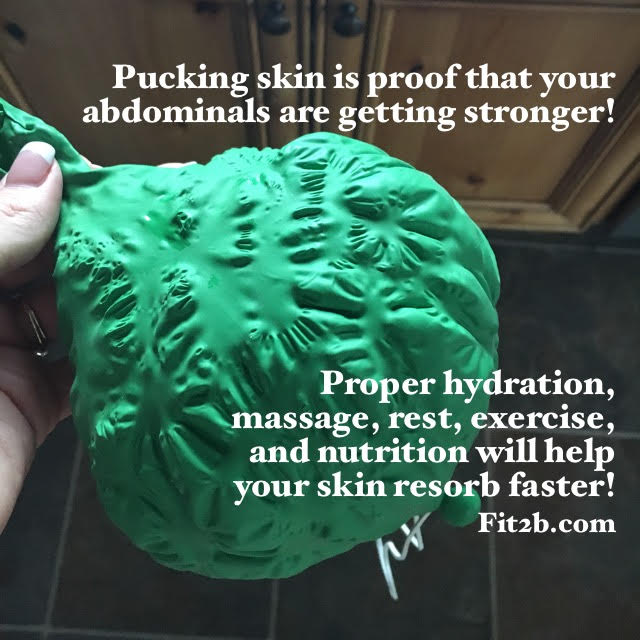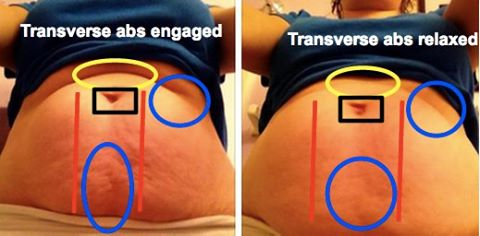Blog
Why Does My Skin Pucker When My Diastasis Recti Narrows?
As your belly muscles regain proper tension and strength, and your diastasis recti begins to narrow, the skin on your tummy may pucker and dimple as the pressure from within your core is more controlled. This isn’t about sucking it in and constantly flexing your abs, rather, as your transverse abdominus “corset” muscle that wraps all the way around your midsection comes back online your belly will have a new “resting” tension that results in less distension and deflation.

It’s common for women to think – at least at first – that the puckered skin left behind by healing muscles is ugly. Perhaps, according to modern media where every blemish is airbrushed, the shifting landscape of your abs isn’t up to supermodel standards. You are a supermodel to your loved ones, though, and especially to your little ones who hopefully aren’t yet tainted by the world’s dumb standards of beauty.

Regardless of whether you see your glorious body and belly as a marvelous map of miracles or a marred manifestation of brokenness and ugliness, that puckering skin isn’t permanent. It will gradually remake itself into a smaller size as it registers that it has less of your belly to cover. You can support it by doing certain things to speed the process a bit.
Having had my hands in hundreds of bellies as I check for diastasis recti, I view the paper-like skin of a belly that’s been stretched to its limits as BEAUTIFUL evidence of strength, endurance and resilience. This isn’t about erasing all the precious evidence of motherhood, however mothers aren’t the only ones with loose skin left over after a belly shrinks; plenty of men and women without kids experience similar skin puckering during rapid weight loss.

Much like the fascia that runs down the center of your abs – the same fascia that is regaining tension and pulling the two sides of your abs together, thus causing your skin to pucker – your epidermis is connective tissue that is prompted to adapt in different ways depending on the stimuli it receives. It has an amazing ability to grow, shrink and recover!
If your skin puckers as your diastasis narrows, you can…
- Drink Enough Water – Hydration plays a critical role in ridding the body of old, unneeded cells. Dehydrated skin will show more lines and puckers. Ensuring your intake of adequate fluids keeps your circulation optimal, and hey! You’re 70% water for a reason! Click here to read more about water’s role in the chemistry of a closing core.
- Get enough protein – Protein is required to build new muscle and new fascial matrix. Your DNA is constantly synthesizing protein to replicate itself within every cell of your body. No protein = no new cells. If you have trouble getting enough protein into your diet, I strongly recommend you learn about collagen hydrolysate as a potential protein supplement here.
- Sleep – It’s when your body rebuilds while you’re laying still, shutting down, but inside your body, all the restoration is happening. A casual internet search yields 7-8 hours as the standard recommendation for a good night’s rest. If you’ve got a baby or toddler at home who aren’t sleeping through, however, you’re probably having a laugh at that. No worries, you can focus on the other ways to help your skin.
- Massage – Gently massaging your belly’s skin toward the center, practicing dry skin brushing, or indulging in Maya Abdominal Massage can be ah-may-zing when it comes to stimulating skin resorption, breaking up scar tissue, and even improving digestion! We have a few free videos here on Fit2B showing you how to self-massage your tummy.
- Exercises that benefit your skin – If your muscles are regaining their proper function and tension, it’s important for you stay consistent. Don’t give up just because this transitional time doesn’t look ideal to you. Continue getting stronger. Continue improving your alignment. Continue investing in yourself. If you want ~200 workouts that will strengthen you from your core outward, learn more about membership to Fit2B here!
Patty R. was gracious enough to submit these two pictures of her tummy with her transverse abdominus fully relaxed and then gently engaged on the exhale. She gave me permission to use them here on the blog as well, and the explanation of the colored shapes is below:

-The blue circles show how the skin puckers and pulls in when the transverse abdominus engages.
– The black boxes show how the belly button narrows, pulls inward and changes shape as she flexes.
– The yellow oval highlights the classic bulge of extra skin and viscera as the abs come together
– The red lines show you my guesstimate of where the ridges of her palpable rectus abdominus would be.
In some ways Patty’s belly looked smoother when she was not flexing, but notice also how it is more pendulous and hangs a bit lower when her TvA isn’t active. This shows how the “apron” can be diminished. The skin will eventually resorb, but at first, narrowing and retensioning a diastasis recti can make the skin look very different!
In closing, I’d like to suggest that this process is a lot like the remodels we’ve done on two separate homes. As much as we’d like, remodeling takes time and effort, and it looks like a big mess between the “before” and “after” pictures. Sometimes, even when it’s done, it still doesn’t feel done. Know what I mean?
If we look at a half-finished kitchen and compare that remodel to the restoring of a core, we can’t count our own dust and detritus against ourselves. We can’t call the temporary clutter and chaos of cupboards half-assembled and tummies half-healed done! They’re not done. There is still time.
And we can choose to find joy in the journey, knowing we are a work in progress. We can have grace on ourselves, and modeling that grace and expressing joy in our divine design is a POWERFUL example to those around us. What do you think?

In the massage video she’s specifically talking about scars, but what about stretch marks and generally squishy skin from pregnancy? Does the same apply?
Massage helps to stimulate circulation in the area, press out debris, and so many more helpful processes that support skin restoration.
Pingback: Is Your FitPro BS’ing You? – Midlife Moms Adventure Club